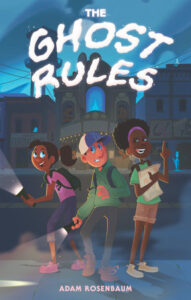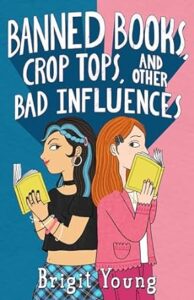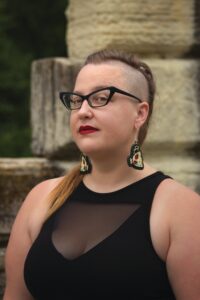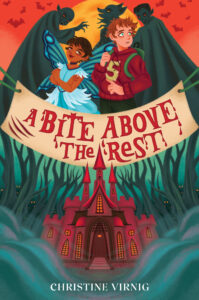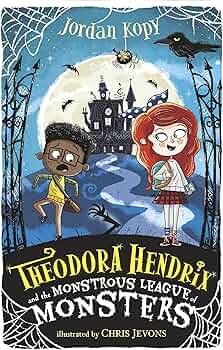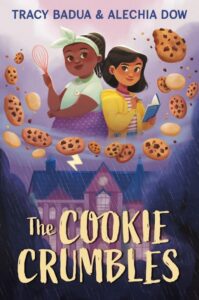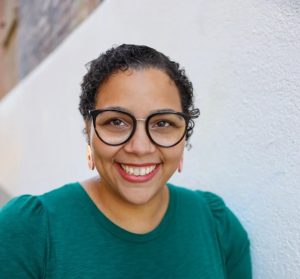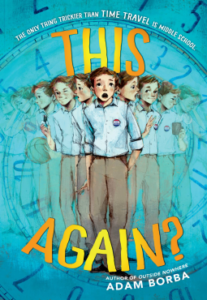“Using Storytelling to Flip the Script on our Fears”
I used to be afraid of sharks when I was a kid. Like, really afraid. And maybe still am? Okay, that’s a lie. I am definitely, 100% still afraid of sharks, across the board, all the time. I blame a way too early viewing of JAWS and a wildly active imagination. But instead of facing my fears head-on back in the day, I am now an adult with children of my own who won’t venture more than a few feet into the ocean because a 30-foot great white shark might pop out of the depths and turn me into a morning snack.
There are so many amazing ways to help kids face their fears. And while I am by no means an expert on emotional health (see: my inability to swim in an ocean), I’d like to throw out a suggestion that might help some kids view their fears from a different angle. And it involves a little creativity!
My debut Middle Grade novel, The Ghost Rules, is about a boy named Elwood who can see ghosts. But in my book, ghosts aren’t scary at all. They aren’t haunting the living or terrifying children at night. My ghosts are goofy and annoying and drool a lot and are kind of obsessed with coffee. I took another fear of mine from when I was a kid (I was an anxious child, believe it or not), put a funny spin on it, and built a story around it.
Which is exactly what you can do!
I’ve brought this simple exercise into schools and nonprofits and have been blown away at the creativity and vulnerability of the kids who participate. Not only do some of the kids genuinely confront their fears, they also end up revealing those fears to one another before turning what they’re afraid of into something a little less scary.
If that sounds like something that could be valuable, here are some suggestions for how you can encourage the kids in your life to face their fears through storytelling:
1) IDENTIFY A FEAR
Some kids are MORE THAN happy to share their fears. Other kids have kept those fears bottled up for so long that to even utter them out loud is too much. So I usually say, “Let’s pick something that can be scary. It doesn’t have to be your own fear. Maybe it’s something your little brother or sister is afraid of, or something you used to be afraid of.” And I usually give my fear of sharks as an example to kick things off.
2) FIND A WAY TO MAKE IT SILLY
For The Ghost Rules, I made my ghosts bumbling, forgetful, and covered in ghost drool. To extend my shark example, I ask the kids how we can make something like a shark a little less scary. The ideas they’ve come up with have been so fun and imaginative: a shark who can’t see underwater and needs glasses, or a shark that only wants to eat pickles.
The opportunities here for fun, creative discussion are endless.
3) BUILD A STORY
When crafting a story with kids, I narrow it down to 3 basic things: a main character, a problem, how the main character overcomes that problem.
Sometimes they build a story together in smaller groups, sometimes the kids want to go off on their own and write and illustrate by themselves.
4) SHARE OUR STORIES
The best part of the whole exercise is when we come back together to share our stories, and the kids reveal what fear they chose (individually or as a group) and how they made it goofy. I give extra points to the kids who also illustrate their stories.
To state the obvious, I doubt any child walks away completely changed and fear-free. But it’s pretty amazing to see a kid smile and laugh as they’re talking about something that just minutes earlier had made their voice quiver.
And hopefully it’s a good first step toward their own emotional health so they avoid turning into a 40-something who still can’t swim in the ocean.
Published August 13th, 2024 by Holiday House for Young Readers
About the Book: Twelve-year-old Elwood McGee never asked to have “ghost-sight,” and it involves a lot more drool-dodging than he expected. Ghosts are the WORST—and they’re all over the place in this sharp-witted middle grade debut novel.
Did you know that ghosts love coffee? They’re not trying to be scary. They’re just deprived of an appropriate amount of caffeine! They also bump into things by accident, are occasionally nosy, and get a little nervous when they’re seen by the living.
Elwood McGee knows these ghost facts because he’s one of those rare people with the gift of ghost-sight. And it turns out ghosts are everywhere! Especially in the small Tennessee town where Elwood and his family had to move following the death of his big brother Noah, which Elwood thinks was his fault.
Once Elwood figures out he can see ghosts, he becomes single-mindedly determined to use his powers to see Noah and talk to him once last time. With the help of two girls who live on his street, Elwood embarks on a journey through the surprisingly funny world of ghosts and faces the realities of letting go.
At once hilarious and heart wrenching, Adam Rosenbaum makes his middle grade debut with a supernaturalish novel about grief that’s perfect for fans of Gordon Korman and Dan Gutman.
A Junior Library Guild Gold Standard Selection
Thank you, Adam, for this exercise to use with students to face fears and do some writing!
